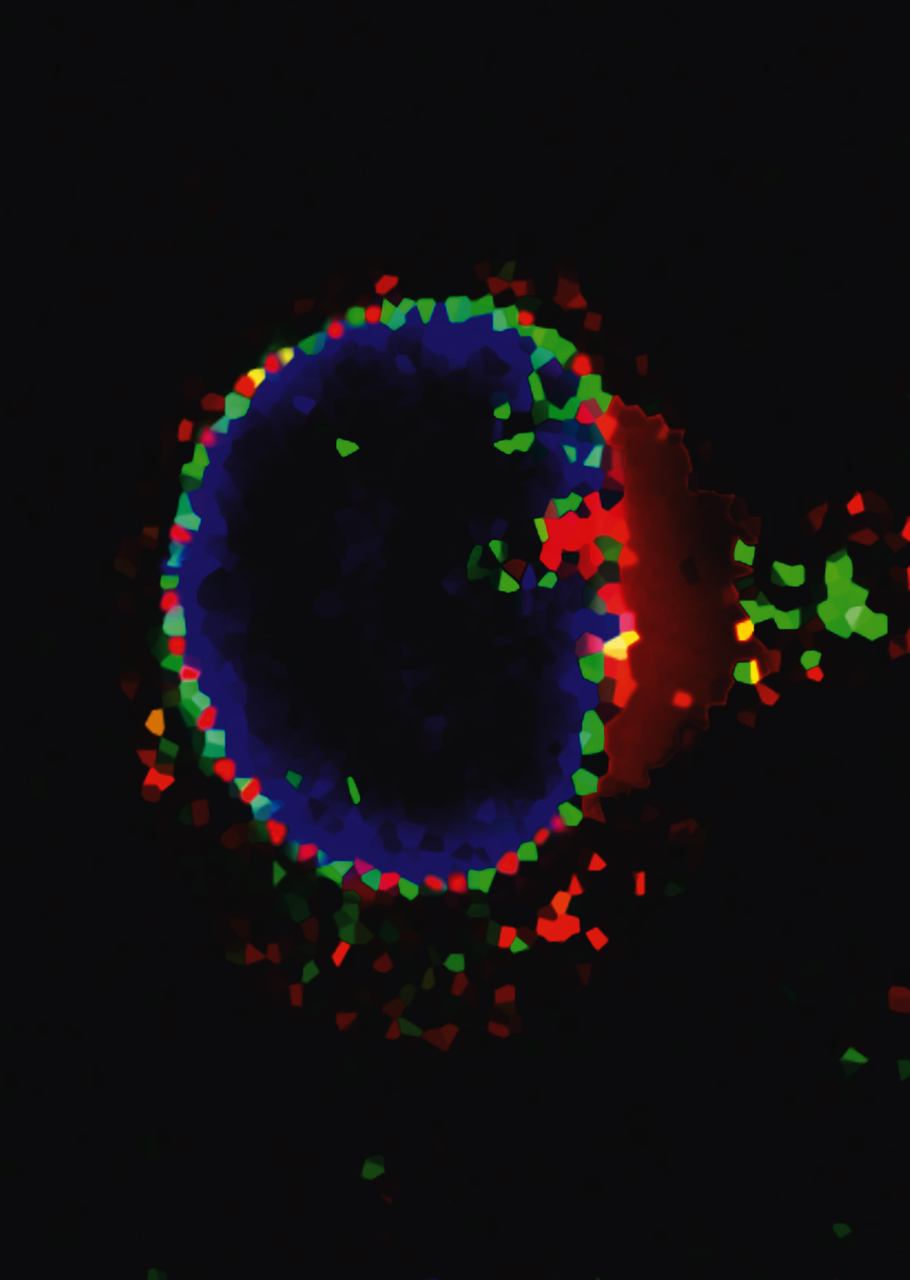HIV-1 manipulates DNA repair to avoid immune sensing and superinfection
Manipulation of the host cell is essential for replication and spread of HIV-1, the causative agent of AIDS. In a collaborative study, the Wiesmüller and Kirchhoff labs specialized in DNA repair and HIV/AIDS, respectively, now discovered that HIV-1 utilizes its accessory factor Vpu to suppress the accumulation and sensing of nuclear viral DNA species as well as superinfection.
To examine how HIV-1 modulates DNA repair in productively infected cells, Meta Volcic, a former student in the Wiesmüller lab who became a Postdoc in the Kirchhoff team a few years ago, used fluorescence-based reporter assays for specific DNA repair pathways. Unexpectedly, she discovered that the viral protein U (Vpu) is a key modulator of DNA repair. By inhibiting the DNA repair protein RAD52, Vpu prevents circularization of linear viral DNA entering the nucleus. Concomitantly, Vpu activates the cellular helicase BLM that unwinds the ends of the linear DNA and permits degradation of the viral DNA by the exonuclease 1 (EXO1). Thus, Vpu prevents the accumulation and immune sensing of viral DNA species but also further proviral integration. At first, it may seem surprising that HIV-1 inhibits its own integration. However, Vpu is only present when HIV-1 has already accomplished productive infection and the virus must prevent further rounds of infection to optimize viral spread and delay the death of infected cells.
Altogether, the study showed that the HIV-1 Vpu protein prevents viral superinfection and immune sensing by sophisticated synergistic mechanisms. The discovery that BLM and EXO1 restrict proviral integration may lead to novel approaches to suppress the establishment of latent reservoirs of HIV-1 presenting the major obstacle against a cure of HIV/AIDS.
The study was published in Nature Microbiology on July 20
Volcic, M., Sparrer, K.M.J., Koepke, L., Hotter, D., Sauter, D., Stürzel, C.M., Scherer, M., Stamminger, T., Hofmann, T.G., Arhel, N., Wiesmüller, L., and Kirchhoff, F. Vpu modulates DNA repair to suppress innate sensing and hyper-integration of HIV-1. Nat. Microb. (2020).


